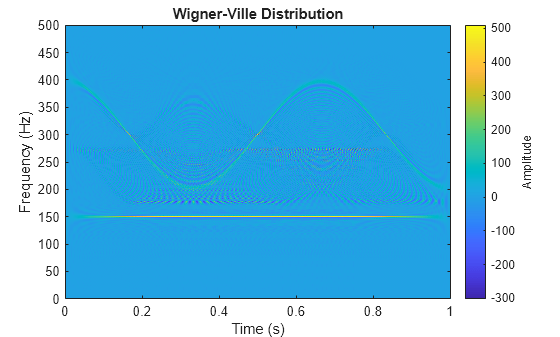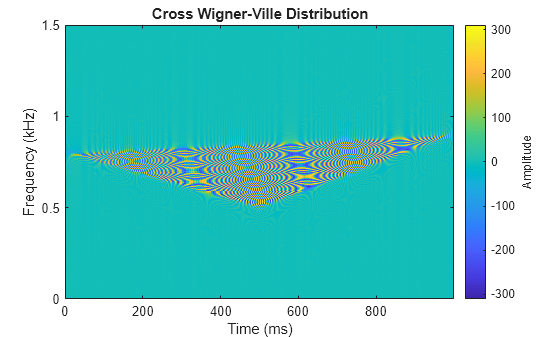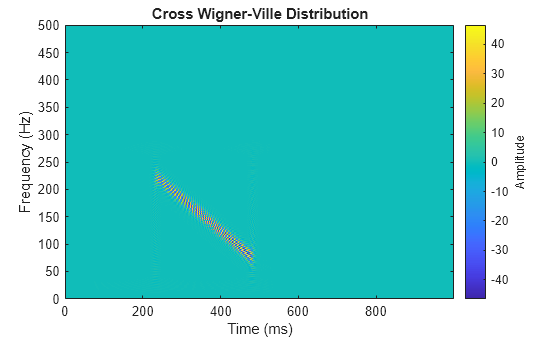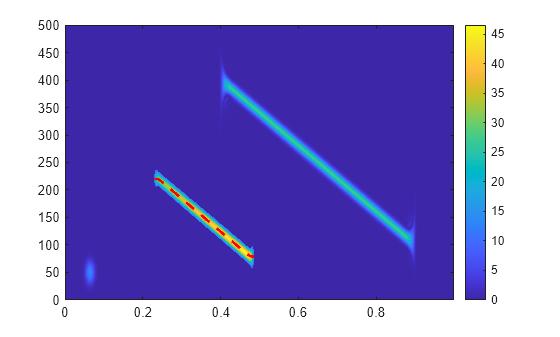xwvd
Cross Wigner-Ville distribution and cross smoothed pseudo Wigner-Ville distribution
Syntax
Description
d = xwvd(___,"smoothedPseudo")x and
y. The function uses the length of the input signals to choose the
lengths of the windows used for time and frequency smoothing. This syntax can include any
combination of input arguments from previous syntaxes.
xwvd(___) with no output arguments plots the real
part of the cross Wigner-Ville or cross smoothed pseudo Wigner-Ville distribution in the
current figure.
Examples
Input Arguments
Output Arguments
More About
References
[1] Cohen, Leon. Time-Frequency Analysis: Theory and Applications. Englewood Cliffs, NJ: Prentice-Hall, 1995.
[2] Mallat, Stéphane. A Wavelet Tour of Signal Processing. Second Edition. San Diego, CA: Academic Press, 1999.
[3] Malnar, Damir, Victor Sucic, and Boualem Boashash. "A cross-terms geometry based method for components instantaneous frequency estimation using the cross Wigner-Ville distribution." In 11th International Conference on Information Sciences, Signal Processing and their Applications (ISSPA), pp. 1217–1222. Montréal: IEEE®, 2012.







